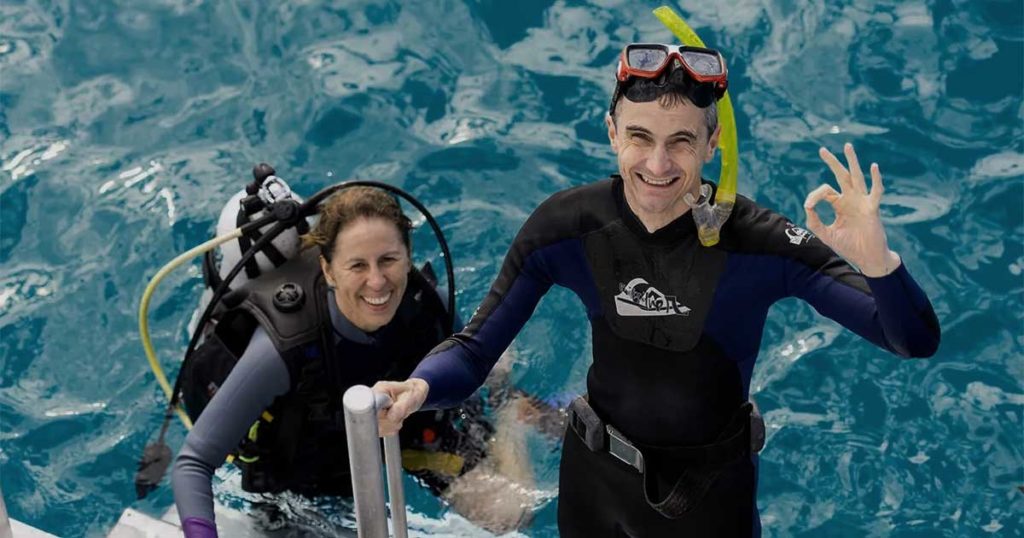Don’t sell classes. Sell fun.
If yours is like most dive centers, the most important product you sell is your Open Water Diver course. Without it, you would have to depend on other dive centers to create customers for you. That’s not likely to happen.
Underscoring this is that as many as half of first-time visitors to most dive store websites are looking specifically for information on becoming certified divers. Look at your own website traffic. If your learn-to-dive page is not the most-visited page on the website, you should probably rethink how your website is structured.
The problem with selling Open Water Diver courses is that they all appear the same from a nondiver’s perspective. It’s like a box of laundry detergent. Whether you buy it at Walmart or 7-Eleven, it’s still the same identical product.
It’s the same with scuba courses. Unless you take steps to differentiate your Open Water Diver course from other dive centers, prospective customers will base their buying decision solely on price or convenience. And, when courses appear equally convenient, price becomes the sole deciding factor.
So how do you avoid this?
The difference between price and value
While a small number of people will ignore all other considerations and base their purchases solely on price, most are smart enough to understand the importance of value. Simply stated:
- Price is what you pay.
- Value is what you get for your money.
While you do not (and, arguably, should not) need to have the cheapest scuba course in town, you do need to sell the one that offers the best value. So, how do you do that? In this article, we will explore ways to accomplish this.
Sell the fun
As industry veteran Mike Hill points out, no one signs up for a scuba course because they want to learn to dive. They do so because they want to have fun.
Unfortunately, we can get so wrapped up in selling safety that we overlook the fun aspect. And as a result, we end up marketing courses that appear to be anything but fun.
Consumers expect you to teach them to dive safely. You needn’t belabor the point. What they are really looking for is someone who will teach them how to have fun underwater. So how do you market this? To start, are you doing everything you can to make your courses fun? Examples may include:
- Allow students to play underwater instead of just doing skills. There are waterproof playing cards and chess sets you can take underwater. Swimming through hula hoops while maintaining buoyancy and trim is more than a skill-building exercise; it’s fun.
- Let students play with a GoPro or similar camera in the pool. Make sure the resulting imagery makes its way onto Facebook and Instagram.
- After each class session, provide an opportunity for students to go out for a meal or engage in an enjoyable activity not necessarily related to diving.
Social media can be your primary tool when promoting how much fun students have in your courses.
- Every time you teach a class, post pictures or videos of your students on the surface and underwater. Make sure these make it clear how much fun students are having.
- Encourage students to share these posts with friends and family members. Word-of-mouth has always been among the most effective ways to promote classes. Social media allows us to take this to a whole new level.
- Make it clear that students in your classes do more than just get wet together. Share images of your students dining out, kicking back or visiting attractions like a local aquarium or marine museum.

